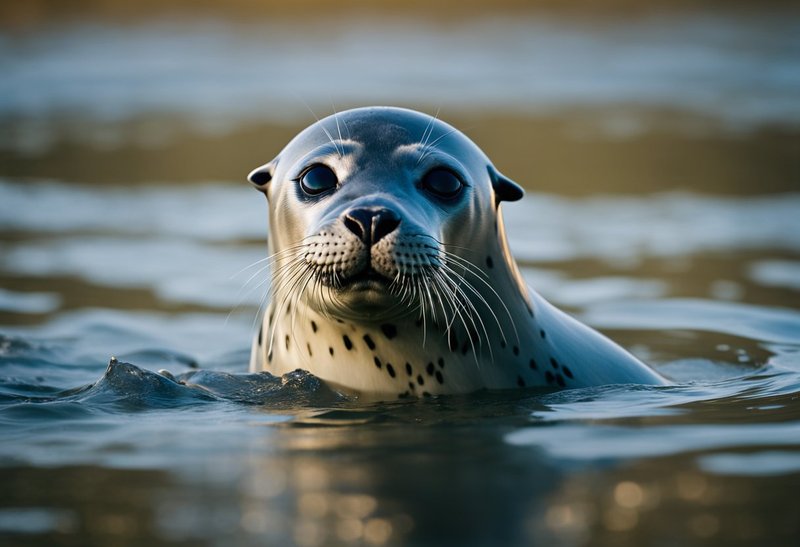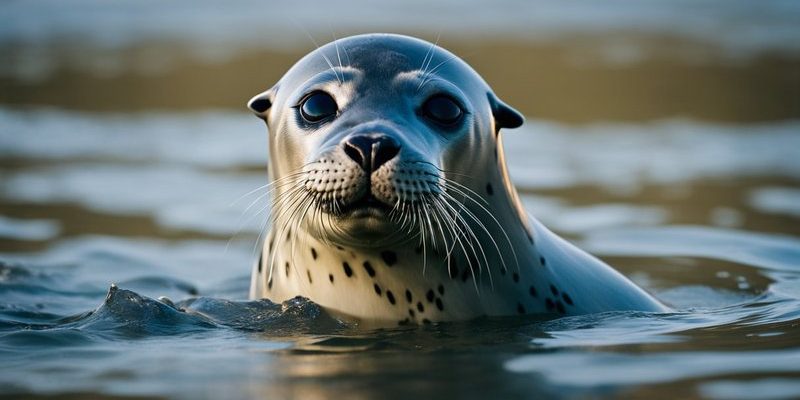
Seals are more than meets the eye. From ancient folklore to modern-day interpretations, these fascinating marine mammals have inspired countless tales. In some cultures, seals symbolize transformation and adaptability, while in others, they’re harbingers of good or ill fortune. Let’s explore the myths and cultural beliefs surrounding seals, revealing how they’ve shaped our understanding and appreciation of these remarkable creatures.
Seals in Folklore and Legends
Throughout history, seals have turned up in the stories of many cultures. You might be familiar with the Selkie legend from Scottish and Irish folklore. These enchanting beings are said to be seals that can shed their skin to become beautiful humans. The tales often depict them as sad figures, torn between the sea and the land. They symbolize longing, love, and the struggle between two worlds—a reminder of our own internal battles for identity.
Another fascinating aspect is the Inuit folklore about the Ningyo. This creature is portrayed as a mermaid with a seal-like body. In these stories, Ningyos are often seen as both benevolent and mischievous, sometimes helping fishermen and at other times bringing storms. Such tales remind us that animals like seals can hold a duality—representing both the nurturing and the unpredictable forces of nature.
Seals have also appeared in Native American beliefs. For example, among the Aleut people, seals are viewed as protectors and providers. They are celebrated in traditional ceremonies and often depicted in art, serving as a connection to the spirit world. These rich narratives show how intertwined seals are with human culture and the natural environment.
The Symbolism of Seals Across Cultures
Seals carry different meanings across various cultures, often embodying important qualities. Many indigenous cultures see seals as symbols of good fortune and abundance. For instance, the Inuit people believe that seals are the guardians of the sea, providing sustenance and wisdom to the hunters who respect them.
Conversely, in some Pacific Island cultures, seals are viewed with caution. They might be seen as tricksters or omens of misfortune, especially if encountered during fishing expeditions. This dual nature of seals—both revered and feared—reflects the complexities of human interactions with nature.
Furthermore, seals are also associated with adaptability. Their graceful swimming and ability to thrive in both marine and terrestrial environments serve as metaphors for resilience. This symbolism resonates with many people, reminding us to embrace change and face challenges head-on.
Seals and Environmental Beliefs
The relationship between seals and environmental beliefs is profound. Many cultures emphasize the importance of seals as indicators of ocean health. When seals thrive, it often means that the marine ecosystem is balanced. Therefore, the decline in seal populations can signal larger environmental issues, raising alarms about conservation.
Indigenous communities have often held ceremonies to honor seals, acknowledging their role in the ecosystem. They believe that by respecting seals, they ensure a sustainable relationship with the land and sea. This viewpoint fosters a deep connection to nature, urging people to act responsibly in today’s world.
In modern times, as climate change and pollution threaten seal habitats, many are advocating for their protection. Environmental organizations emphasize that seals are not only essential to biodiversity but also vital to preserving marine health. This shift in belief highlights an evolving understanding of our role as stewards of the environment.
Seals in Art and Literature
Seals have captivated artists and writers for centuries. Their playful nature and mysterious presence lend themselves to various artistic interpretations. In art, seals often represent playfulness, freedom, and the spirit of the sea. From intricate carvings by indigenous artists to contemporary paintings, seals are a common motif celebrating marine life.
In literature, seals frequently appear as symbols of the connection between humanity and the natural world. In popular children’s tales, for example, seals are often portrayed as friendly companions, teaching lessons about friendship, loyalty, and care for the environment.
Moreover, seals feature prominently in poetry, where they are used to evoke emotions tied to longing and freedom. Their relationship with the ocean serves as a powerful metaphor for the ebb and flow of life. Whether in fiction or visual art, seals consistently inspire creativity and convey deeper messages about our connection to nature.
Modern Interpretations and Conservation Efforts
In recent years, the cultural significance of seals has been amplified through conservation efforts. As awareness about climate change and habitat loss grows, seals have become symbols of the urgent need for environmental protection. People are drawn to their charming appearance and playful behaviors, often prompting support for conservation campaigns.
Organizations dedicated to seal protection advocate for better policies and sustainable practices. They remind us that the health of seal populations is directly linked to ocean health. By actively participating in conservation initiatives, individuals can contribute to the ongoing narrative of seals as resilient survivors adapting to change.
Moreover, educational programs about marine life often feature seals as primary examples of interconnectedness in ecosystems. Understanding seals helps foster a sense of responsibility towards the ocean and its many inhabitants. This modern perspective reinforces the idea that caring for seals means caring for our planet.
The Takeaway: Cultural Connections and Responsibility
As we’ve seen, seals are more than just adorable marine mammals; they embody a rich tapestry of myths and cultural beliefs. From ancient legends to modern conservation efforts, seals connect us with nature and remind us of our responsibility to protect it.
Understanding the myths and beliefs surrounding seals enhances our appreciation for these incredible creatures. It encourages us to respect their habitats and consider how our actions affect their lives. By fostering this connection to seals, we can contribute to a healthier planet for generations to come.
In the end, seals teach us important lessons about adaptability, resilience, and the beauty of nature. As we continue to explore their stories and significance, let’s remember that every small effort to protect them counts. After all, in the grand ocean of life, we are all connected.

